Dragon fruit, also known as pitaya or pitahaya, is a vibrant, exotic fruit that grows on the Hylocereus cactus. With its striking pink or yellow skin and speckled white or red flesh, this tropical treasure is not only a treat for the eyes but also packed with nutrients and antioxidants. While often seen as a specialty item in grocery stores, dragon fruit is surprisingly easy to grow at home—even for beginners!
Whether you have a spacious garden or a sunny balcony, this complete beginner’s guide will teach you how to successfully grow, care for, and harvest your own dragon fruit plant from scratch.
What is Dragon Fruit?
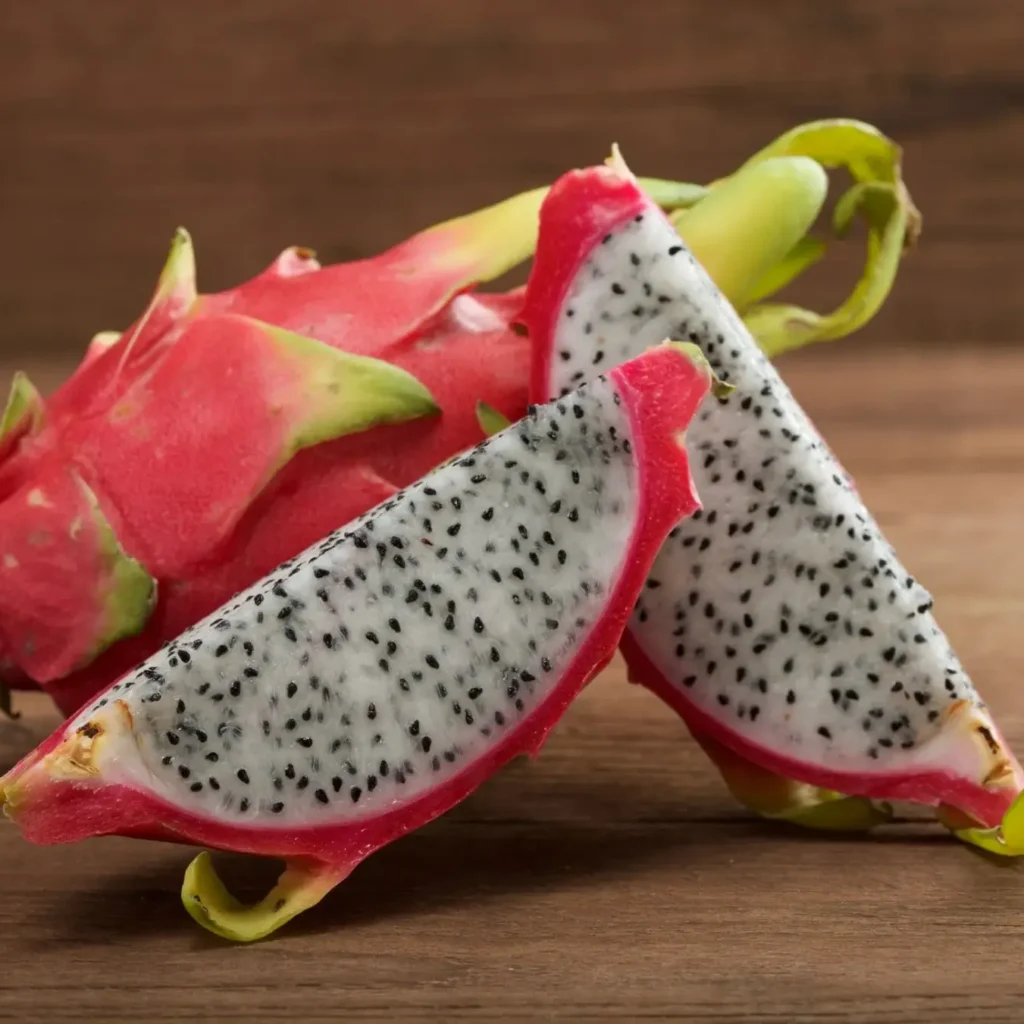
Dragon fruit is the fruit of several different cactus species, most notably from the genus Hylocereus. Native to Central and South America, the plant has gained immense popularity in tropical and subtropical regions across Asia, including Vietnam, Thailand, and the Philippines.
There are three main varieties of dragon fruit:
- Hylocereus undatus: White flesh with pink skin
- Hylocereus costaricensis: Red flesh with pink skin
- Hylocereus megalanthus: White flesh with yellow skin
The plant is both ornamental and edible, known for its climbing habit and large, fragrant night-blooming flowers.
Benefits of Growing Dragon Fruit at Home
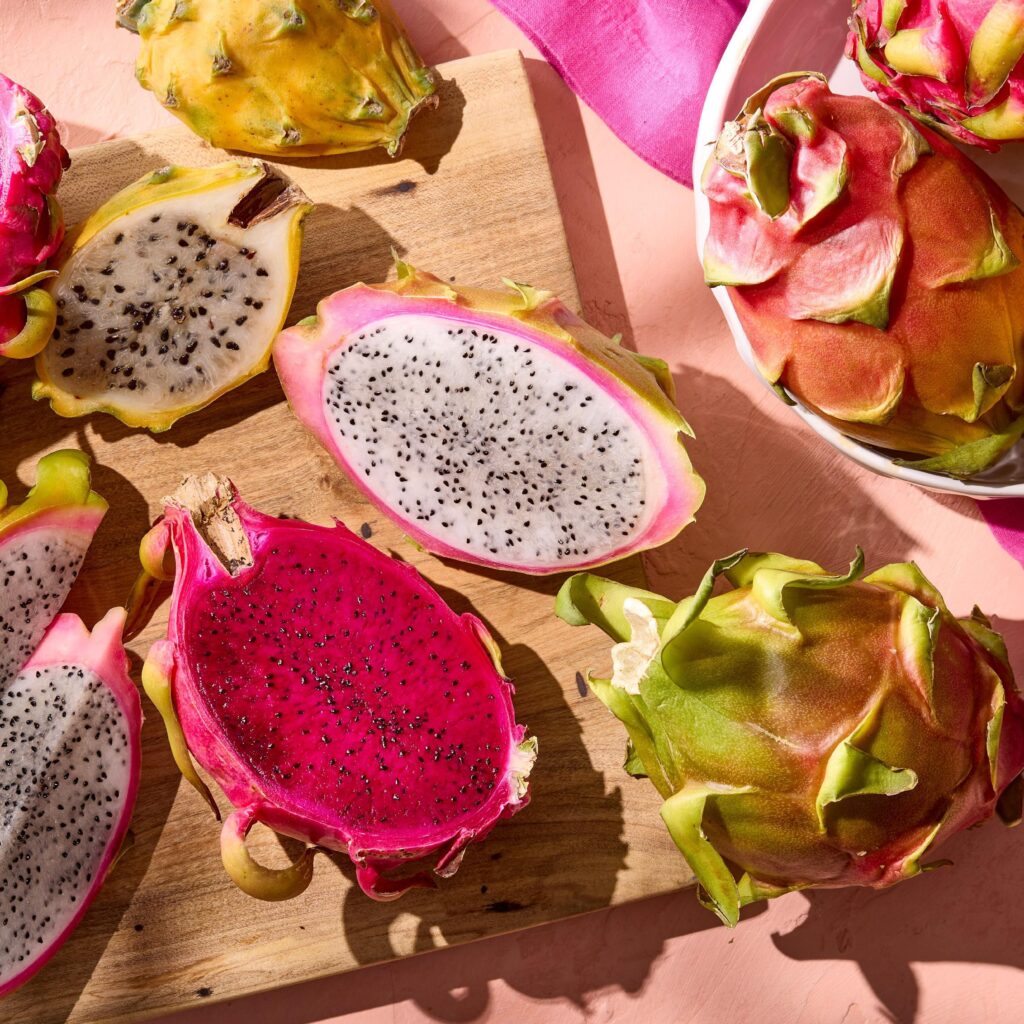
Growing dragon fruit at home offers several benefits:
- Fresh, organic fruit supply
- Low maintenance and drought-tolerant plant
- Unique aesthetic appeal in your garden or balcony
- Rich in vitamin C, fiber, iron, magnesium, and antioxidants
- Supports pollinators like bees and moths
Climate and Location Requirements
Dragon fruit thrives in warm, sunny, and slightly humid environments. The ideal conditions include:
- Temperature: 65°F to 85°F (18°C to 29°C)
- Sunlight: At least 6–8 hours of direct sunlight per day
- Humidity: Moderate
- USDA Zones: 9 to 11 (can be grown in pots indoors in cooler climates)
If you live in a colder region, you can still grow dragon fruit in pots and bring them inside during winter.
How to Propagate Dragon Fruit
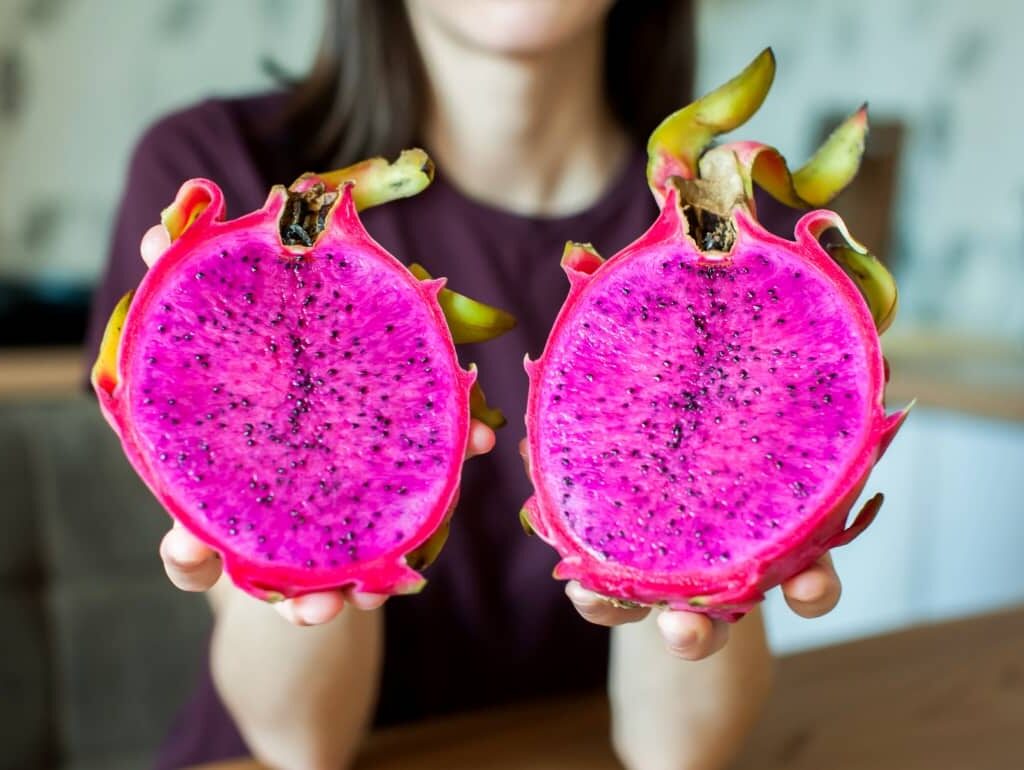
1. From Seeds
You can extract seeds from a ripe dragon fruit, clean them, and dry them for a day or two before planting in seed-starting trays filled with cactus mix. Germination takes about 1–4 weeks.
Pros: Easy and fun
Cons: Takes longer to bear fruit (up to 5–7 years)
2. From Cuttings (Recommended)
Using cuttings from a mature dragon fruit plant is the most efficient way to grow your own.
Steps:
- Cut a 6–12 inch long section from a healthy, mature stem.
- Let it dry for 2–5 days to callus over (prevents rot).
- Plant the cutting in well-draining soil.
Pros: Faster growth and fruiting (1–2 years)
Cons: Requires access to a mature plant
Soil Preparation
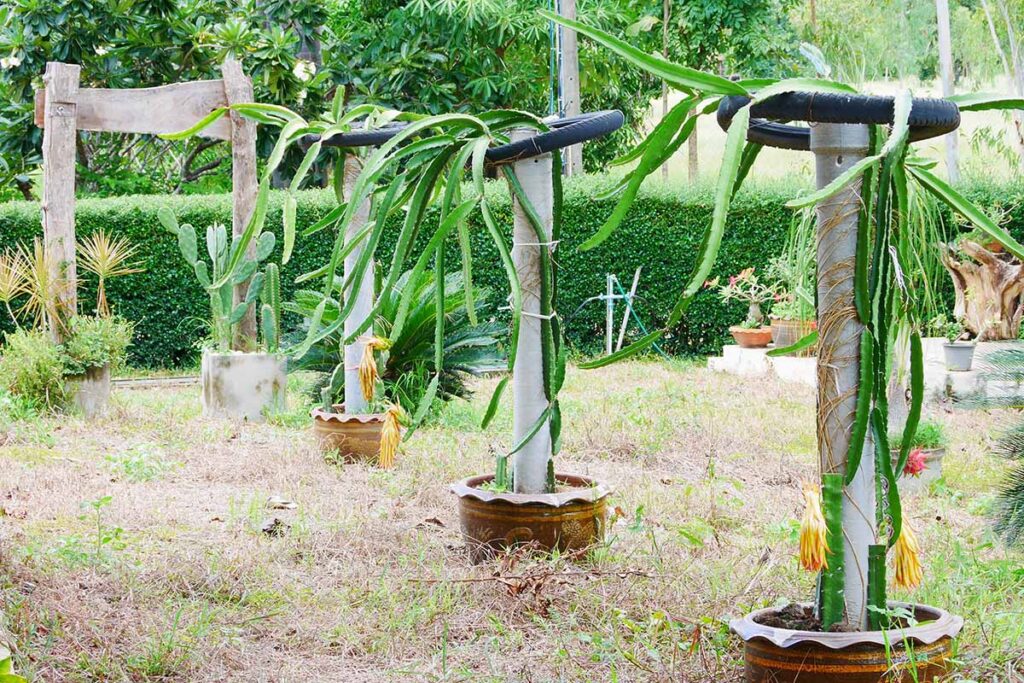
Dragon fruit plants prefer:
- Well-draining sandy or loamy soil
- Slightly acidic to neutral pH (6–7)
- Soil enriched with compost or organic matter
A cactus or succulent mix works great. You can also mix 1 part sand, 1 part garden soil, and 1 part compost for a homemade option.
Choosing a Container (for Potted Plants)
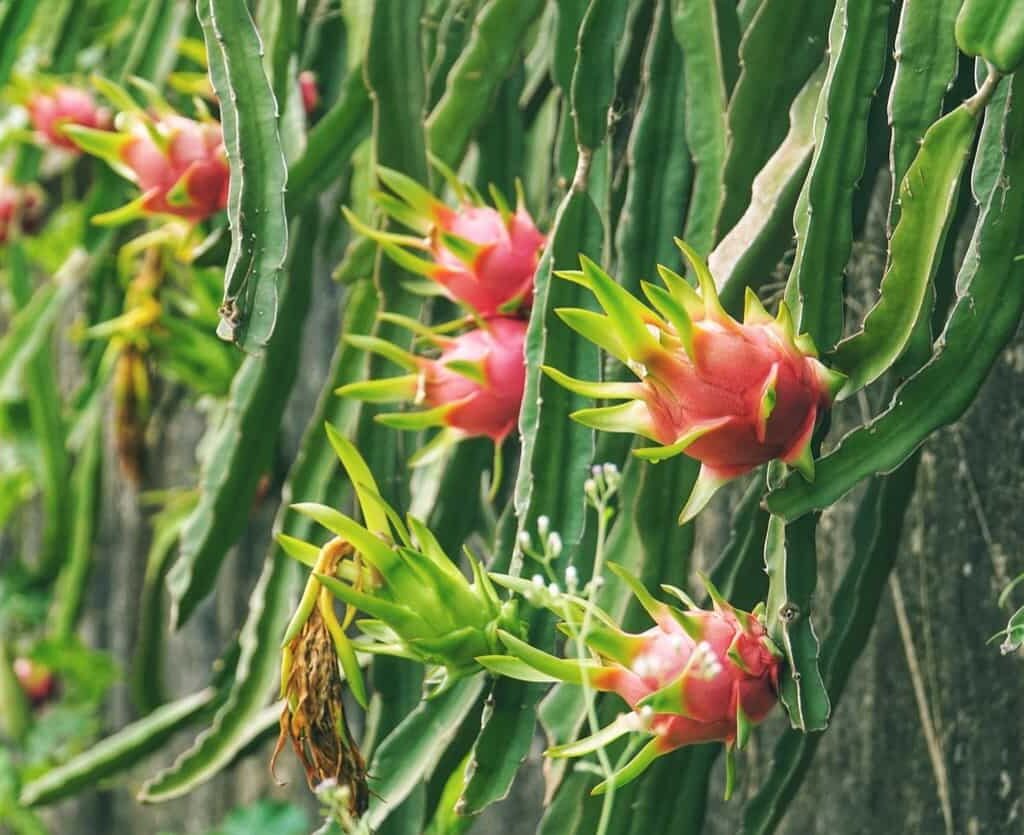
If you’re growing dragon fruit in a container:
- Choose a large pot at least 10–15 gallons in size.
- Ensure it has drainage holes at the bottom.
- Use a sturdy trellis or climbing pole for support.
Dragon fruit is a climbing cactus and requires vertical support to grow upright and healthy.
Watering Needs
Dragon fruit plants are drought-tolerant but still need consistent moisture to thrive:
- Water once or twice per week, depending on heat and humidity.
- Allow the top 1–2 inches of soil to dry between waterings.
- Reduce watering in winter or during dormancy.
Important: Avoid waterlogging, as dragon fruit is susceptible to root rot.
Sunlight and Temperature
Dragon fruit plants need:
- Full sun exposure—minimum of 6 hours daily.
- Warm weather, ideally between 70–90°F.
- If temperatures fall below 32°F (0°C), move container plants indoors.
Provide partial shade during extremely hot summers to prevent sunburn.
Fertilizing Dragon Fruit
Fertilize every 2 months during the growing season (spring to early fall):
- Use a balanced fertilizer (10-10-10 or 14-14-14) or a slow-release cactus fertilizer.
- Apply compost or well-rotted manure annually to enrich the soil.
- Reduce or stop fertilization during the winter.
Pruning and Support
As a climbing cactus, dragon fruit requires:
- Pruning to control size and encourage branching.
- Remove weak, damaged, or overcrowded branches.
- A trellis, fence, or pole for vertical growth (tie the branches loosely with twine).
Pruning helps in better airflow and increases fruit production.
Pollination and Flowering
Dragon fruit blooms only at night and typically only for one evening. To ensure pollination:
- Hand-pollinate using a small brush to transfer pollen from one flower to another.
- Some varieties are self-sterile and need another plant for cross-pollination.
- Flowers bloom 1–2 years after planting (from cuttings).
Harvesting Dragon Fruit
Dragon fruit is ready to harvest about 30–50 days after flowering:
- The skin turns bright pink or yellow.
- The “wings” or tips of the skin start to wither.
- The fruit should give slightly when pressed but not feel mushy.
Use garden shears to cut the fruit off cleanly at the base.
Common Pests and Problems
Pests:
- Mealybugs
- Aphids
- Ants
- Slugs and snails
Solution: Neem oil spray or insecticidal soap.
Diseases:
- Root rot (from overwatering)
- Stem rot
- Fungal infections
Solution: Use well-draining soil, avoid overcrowding, and treat with fungicides if necessary.
Tips for Better Growth
- Use mulch to retain moisture and reduce weed growth.
- Train young stems to grow vertically.
- Repot every 2–3 years to refresh soil and space.
- Protect young plants from intense sun or frost.
Conclusion
Growing dragon fruit at home is a rewarding and exciting gardening experience. Not only does it add a touch of tropical beauty to your home, but it also offers a nutritious fruit that can be enjoyed in smoothies, salads, or eaten fresh. With a little patience, proper care, and the right environment, even a complete beginner can harvest their very own dragon fruit in a couple of years.
So grab a cutting or some seeds, set up a sunny spot, and start your journey into growing one of the most exotic and fascinating fruits on the planet—right at home!

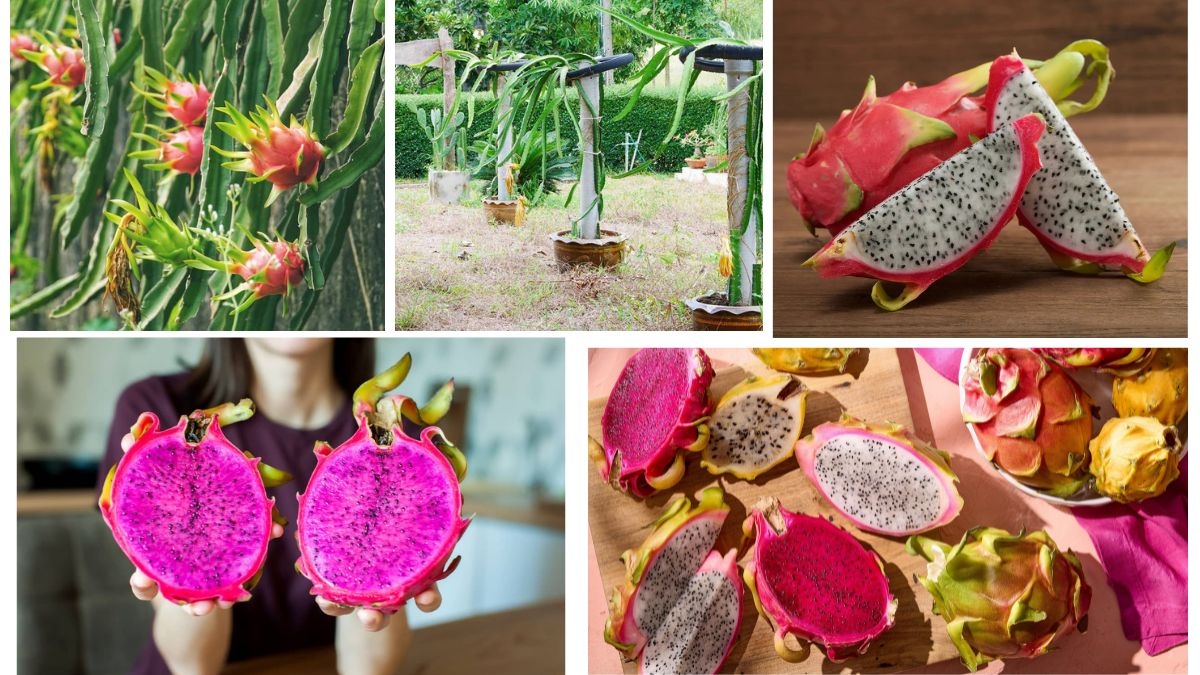



Leave A Comment